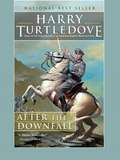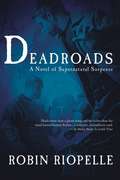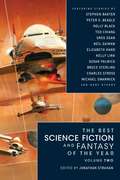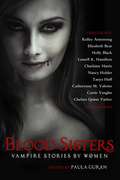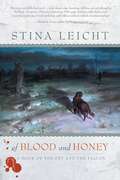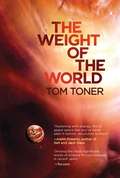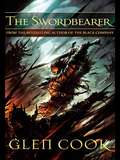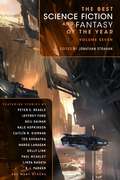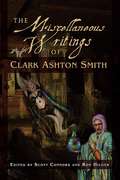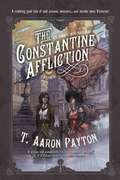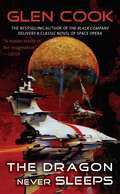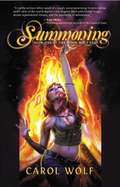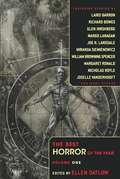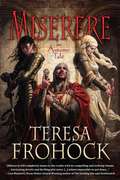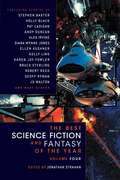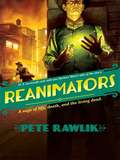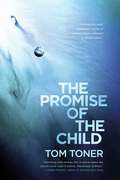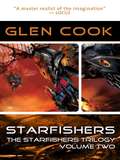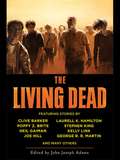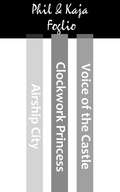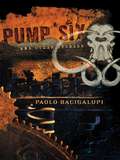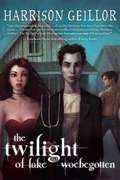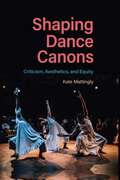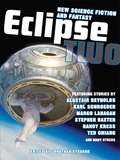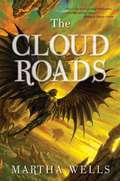- Table View
- List View
After the Downfall
by Harry TurtledoveFrom Harry Turtledove, the master of alternate history, comes After the Downfall, a novel of magic, epic warfare, and desperate choices.1945: Russian troops have entered Berlin, and are engaged in a violent orgy of robbery, rape, and revenge. Wehrmacht officer Hasso Pemsel, a career soldier on the losing end of the greatest war in history, flees from a sniper's bullet, finding himself hurled into a mysterious, fantastic world of wizards, dragons, and unicorns. There he allies himself with the blond-haired, blue-eyed Lenelli, and Velona, their goddess in human form, offering them his knowledge of warfare and weaponry in their genocidal struggle against a race of diminutive, swarthy barbarians known as Grenye. But soon, the savagery of the Lenelli begins to eat at Hasso Pemsel's soul, causing him to question everything he has long believed about race and Reich, right and wrong, Ubermenschen and Untermenschen. Hasso Pemsel will learn the difference between following orders... and following his conscience.
Deadroads
by Robin RiopelleThe Sarrazins have always stood apart from the rest of their Bayou-born neighbors. Almost as far apart as they prefer to stand from each other. Blessed—or cursed—with the uncanny ability to see beyond the spectral plain, Aurie has raised his children, Sol, Baz, and Lutie, in the tradition of the traiteur, finding wayward spirits and using his special gift to release them along Deadroads into the afterworld. The family, however, fractured by their clashing egos, drifted apart, scattered high and low across the continent.But tragedy serves to bring them together. When Aurie, while investigating a series of ghastly (and ghostly) murders, is himself killed by a devil, Sol, EMT by day and traiteur by night, Baz, a travelling musician with a truly spiritual voice, and Lutie, combating her eerie visions with antipsychotics, are thrown headlong into a world of gory spirits, brilliant angels, and nefarious demons—small potatoes compared to reconciling their familial differences.From the Louisiana swamps to the snowfields of the north and everywhere in between, Deadroads summons you onto a mysterious trail of paranormal proportions.
The Best Science Fiction and Fantasy of the Year
by Jonathan StrahanThe depth and breadth of what science fiction and fantasy fiction is changes with every passing year. The two dozen stories chosen for this book by award-winning anthologist Jonathan Strahan carefully maps this evolution, giving readers a captivating and always-entertaining look at the very best the genre has to offer.
Blood Sisters: Vampire Stories By Women
by Nancy Holder Tanya Huff Laurell K. Hamilton Holly Black Charlaine Harris Kelley Armstrong Elizabeth Bear Carrie Vaughn Catherynne M. Valente Paula GuranA tantalizing selection of stories from some of the best female authors who&’ve helped define the modern vampire.Bram Stoker was hardly the first author—male or female—to fictionalize the folkloric vampire, but he defined the modern iconic vampire when Dracula appeared in 1897. Since then, many have reinterpreted the ever-versatile vampire over and over again—and female writers have played vital roles in proving that the vampire, as well as our perpetual fascination with it, is truly immortal. These authors have devised some of the most fascinating, popular, and entertaining of our many vampiric variations: suavely sensual . . . fascinating but fatal . . . sexy and smart . . . undead but prone to detection . . . tormented or terrifying . . . amusing or amoral . . . doomed or deadly . . . badass and beautiful . . . cutting-edge or classic . . .Blood Sisters collects a wide range of fantastical stories from New York Times bestsellers Holly Black, Nancy Holder, Catherynne M. Valente, and Carrie Vaughn, and critically acclaimed writers Chelsea Quinn Yarbro and Tanith Lee, all of whom have left their indelible and unique stamps on the vampire genre. Whether they are undeniably heroes and heroines or bloodthirsty monsters (or something in between), the undead are a lively lot. This anthology offers some of the best short fiction ever written by the &“blood sisters&” who know them best: stories you can really sink your teeth into.
Of Blood and Honey (The Fey and the Fallen)
by Stina LeichtLiam never knew who his father was. The town of Derry had always assumed that he was the bastard of a protestant — his mother never spoke of him, and Liam assumed he was dead. But when the war between the fallen and the fey began to heat up, Liam and his family are pulled into a conflict that they didn&’t know existed. A centuries old conflict between supernatural forces seems to mirror the political divisions in 1970&’s era Ireland, and Liam is thrown headlong into both conflicts! Only the direct intervention of Liam&’s real father, and a secret catholic order dedicated to fighting &“The Fallen&” can save Liam... from the mundane and supernatural forces around him, and from the darkness that lurks within him.
The Weight of the World: Volume Two of the Amaranthine Spectrum
by Tom TonerIt is the 147th century; the turning of the Amaranthine new year. In the provinces of the Old World, the giant Elatine's war of liberation has come to an impasse, leaving the wicked monarchy of the First in possession of the throne. In the Vaulted Lands of the Firmament, acolytes have risen up to execute their immortal masters. The opportunistic races of the Prism, intoxicated with greed, have arrived inside every Solar Satrapy to scavenge what&’s left. In the wild Investiture, on a forgotten water moon, a crew of shipwrecked Privateers come face to face with their greatest terror, and with it the most valuable treasure in all the galaxy. Jatropha, legendary Immortal, must escort his precious charge through the exotic Westerly Provinces, knowing all the world would steal her if they could. Sotiris, his mind fading fast, must set out to find his dear, drowned sister in a land previously unglimpsed by anyone but the dead. Lycaste, now far from home, must journey in strange company to the edge of a tempestuous sea, to the lair of someone so dangerous that even the legendary Amaranthine fear his name.
The Swordbearer
by Glen CookA young boy's dreams of glory and war turn into a bitter nightmare as his father's kingdom is overrun by an invading army. Lost and alone in the woods, he finds an ancient sword that promises him the ability to claim his vengeance. As he begins to take that vengeance, he comes to realize the price that the sword will demand of him. Enemies soon become allies and strange bedfellows abound as the prophesies of an age swirl into chaos.
The Best Science Fiction and Fantasy of the Year
by Jonathan StrahanIn print and on-line, science fiction and fantasy is thriving as never before. A multitude of astonishingly creative and gifted writers are boldly exploring the mythic past, the paranormal present, and the promises and perils of myriad alternate worlds and futures. There are almost too many new and intriguing stories published every year for any reader to be able to experience them all. So how to make sure you haven&’t missed any future classics?Award-winning editor and anthologist Jonathan Strahan has surveyed the expanding universes of modern sf and fantasy to find the brightest stars in today&’s dazzling literary firmament. From the latest masterworks by the acknowledged titans of the field to fresh visions from exciting new talents, this outstanding collection is a comprehensive showcase for the current state of the art in both science fiction and fantasy. Anyone who wants to know where the future of imaginative short fiction is going, and treat themselves to dozens of unforgettable stories, will find this year&’s edition of Best Science Fiction and Fantasy to be just what they&’re looking for!
The Miscellaneous Writings of Clark Ashton Smith
by Clark Ashton SmithThe Miscellaneous Fictions of Clark Ashton Smith gathers together the adventure, juvenilia and other non-fantastic fiction of Smith. While he is known best for his fantastic work, these adventure and mainstream stories shed light on the development of Smith&’s writing and his constantly evolving style.The Miscellaneous Fictions is a perfect companion to the five volume Collected Fantasies set. As with that set, editors Scott Connors and Ron Hilger have prepared this volume by comparing original manuscripts, various typescripts, published editions, and Smith&’s notes and letters, in order to prepare a definitive set of texts.Contents of The Miscellaneous Fictions include &“The Animated Sword,&” &“The Malay Crise,&” &“The Ghost of Mohammed Din,&” &“The Mahout,&” &“The Rajah and the Tiger,&” &“Something New,&” &“The Flirt,&” &“The Perfect Woman,&” &“A Platonic Entanglement,&” &“The Expert Lover,&” &“The Parrot,&” &“A Copy of Burns,&” &“Checkmate,&” &“The Infernal Star,&” &“The Dead will Cuckold You,&” &“House of the Monoceros,&” &“Dawn of Discord,&” and many others.
The Constantine Affliction
by T. Aaron Payton1864. London is a city in transition. The Constantine Affliction–a strange malady that kills some of its victims and physically transforms others into the opposite sex–has spread scandal and upheaval throughout society. Scientific marvels and disasters, such as clockwork courtesans, the alchemical fires of Whitechapel, electric carriages, and acidic monsters lurking in the Thames, have forever altered the face of the city.Pembroke &“Pimm&” Hanover is an aristocrat with an interest in criminology, who uses his keen powers of observation to assist the police or private individuals–at least when he&’s sober enough to do so. Ellie Skyler, who hides her gender behind the byline &“E. Skye,&” is an intrepid journalist driven by both passion and necessity to uncover the truth, no matter where it hides.When Pimm and Skye stumble onto a dark plot that links the city&’s most notorious criminal overlord with the Queen&’s new consort, famed scientist Sir Bertram Oswald, they soon find the forces of both high and low society arrayed against them. Can they save the city from the arcane machinations of one of history&’s most monsters–and uncover the shocking origin of . . .THE CONSTANTINE AFFLICTION
The Dragon Never Sleeps
by Glen CookFor four thousand years, the Guardships have ruled Canon Space—immortal ships with an immortal crew, dealing swiftly and harshly with any mercantile houses or alien races that threaten the status quo.But now the House Tregesser has an edge: a force from outside Canon Space offers them the resources to throw off Guardship rule. This precipitates an avalanche of unexpected outcomes, including the emergence of Kez Maefele, one of the few remaining generals of the Ku Warrior race-the only race to ever seriously threaten Guardship hegemony. Kez Maefele and a motley group of aliens, biological constructs, an scheming aristocrats find themselves at the center of the conflict. Maefele must chose which side he will support: the Guardships, who defeated and destroyed his race, or the unknown forces outside Canon Space that promise more death and destruction.
Summoning
by Carol WolfThe World Snake is coming, devourer of Thrace and Atlantis… and the only one standing in its way is Amber, a sixteen-year-old runaway, recently arrived in Los Angeles.Amber is more than just a girl with a stolen ID and an attitude; she is a daughter of the wolf-kind, a shapeshifter able to change forms at will. One night, as Amber prowls the Hollywood Hills in wolf form, she stumbles onto an occult ceremony, interrupting the ritual. As a result, Amber finds herself the unwilling mistress of a handsome demonic servant, Richard. Appearing as a fair youth of eighteen years, Richard is a demon accidentally summoned, then captured, by Dr. John Dee, court magician to Queen Elizabeth I. Richard has been trying for four centuries to free himself from a succession of masters and mistresses, but finds himself bound to Amber, the only one who can protect him from his greatest fear, the herald of the World Snake, the Eater of Souls. But all hell is about to break loose, and Amber and Richard are going to need some allies to stop the Eater of Souls and avert the World Snake, and the battle has only begun.From Carol Wolf comes the urban fantasy debut The Summoning, a novel of a wolf girl, a demon boy, and a city on the edge of disaster.
The Best Horror of the Year: Volume 1 (Best Horror of the Year)
by Ellen DatlowAn Air Force Loadmaster is menaced by strange sounds within his cargo; a man is asked to track down a childhood friend... who died years earlier; doomed pioneers forge a path westward as a young mother discovers her true nature; an alcoholic strikes a dangerous bargain with a gregarious stranger; urban explorers delve into a ruined book depository, finding more than they anticipated; residents of a rural Wisconsin town defend against a legendary monster; a woman wracked by survivor's guilt is haunted by the ghosts of a tragic crash; a detective strives to solve the mystery of a dismembered girl; an orphan returns to a wicked witch's candy house; a group of smugglers find themselves buried to the necks in sand; an unanticipated guest brings doom to a high-class party; a teacher attempts to lead his students to safety as the world comes to an end around them...What frightens us, what unnerves us? What causes that delicious shiver of fear to travel the lengths of our spines? It seems the answer changes every year. Every year the bar is raised; the screw is tightened. Ellen Datlow knows what scares us; the twenty-one stories and poems included in this anthology were chosen from magazines, webzines, anthologies, literary journals, and single author collections to represent the best horror of the year.Legendary editor Ellen Datlow (Poe: New Tales Inspired by Edgar Allan Poe), winner of multiple Hugo, Bram Stoker, and World Fantasy awards, joins Night Shade Books in presenting The Best Horror of the Year, Volume One.
Miserere
by Teresa FrohockExiled exorcist Lucian Negru deserted his lover in Hell in exchange for saving his sister Catarina's soul, but Catarina doesn't want salvation. She wants Lucian to help her fulfill her dark covenant with the Fallen Angels by using his power to open the Hell Gates. Catarina intends to lead the Fallen's hordes out of Hell and into the parallel dimension of Woerld, Heaven's frontline of defense between Earth and Hell. When Lucian refuses to help his sister, she imprisons and cripples him, but Lucian learns that Rachael, the lover he betrayed and abandoned in Hell, is dying from a demonic possession. Determined to rescue Rachael from the demon he unleashed on her soul, Lucian flees his sister, but Catarina's wrath isn't so easy to escape!
The Best Science Fiction and Fantasy of the Year
by Jonathan StrahanThe depth and breadth of what science fiction and fantasy fiction is changes with every passing year. The two dozen stories chosen for this book by award-winning anthologist Jonathan Strahan carefully maps this evolution, giving readers a captivating and always-entertaining look at the very best the genre has to offer.
Reanimators
by Pete RawlikTwo Men. A Bitter Rivalry. And a Quarter-Century of Unspeakable Horrors.Herbert West&’s crimes against nature are well-known to those familiar with the darkest secrets of science and resurrection. Obsessed with finding a cure for mankind&’s oldest malady, death itself, he has experimented upon the living and dead, leaving behind a trail of monsters, mayhem, and madness. But the story of his greatest rival has never been told.Until now.Dr. Stuart Hartwell, a colleague and contemporary of West, sets out to destroy West by uncovering the secrets of his terrible experiments, only to become that which he initially despised: a reanimator of the dead.For more than twenty years, spanning the early decades of the twentieth century, the two scientists race each other to master the mysteries of life . . . and unlife. From the grisly battlefields of the Great War to the backwoods hills and haunted coasts of Dunwich and Innsmouth, from the halls of fabled Miskatonic University to the sinking of the Titanic, their unholy quests will leave their mark upon the world—and create monsters of them both.Reanimators is an epic tale of historical horror . . . in the tradition of Anno Dracula and The League of Extraordinary Gentlemen.
The Promise of the Child: of the Amaranthine Spectrum (The Promise of the Child)
by Tom TonerIt is the 147th century.In the radically advanced post-human worlds of the Amaranthine Firmament, there is a contender to the Immortal throne: Aaron the Long-Life, the Pretender, a man who is not quite a man.In the barbarous hominid kingdoms of the Prism Investiture, where life is short, cheap, and dangerous, an invention is born that will become the Firmament&’s most closely kept secret.Lycaste, a lovesick recluse outcast for an unspeakable crime, must journey through the Provinces, braving the grotesques of an ancient, decadent world to find his salvation.Sotiris, grieving the loss of his sister and awaiting the madness of old age, must relive his twelve thousand years of life to stop the man determined to become Emperor.Ghaldezuel, knight of the stars, must plunder the rarest treasure in the Firmament—the object the Pretender will stop at nothing to obtain.From medieval Prague to a lonely Mediterranean cove, and eventually far into the strange vastness of distant worlds, The Promise of the Child is a debut novel of gripping action and astounding ambition unfolding over hundreds of thousands of years, marking the arrival of a brilliant new talent in science fiction.
Starfishers
by Glen CookThe vendetta in space had started centuries before "Mouse" Storm was born with his grandfather's raid on the planet Prefactlas, the blood bath that freed the human slaves from their Sangaree masters. But one Sangaree survived—the young Norborn heir, the man who swore vengeance on the Storm family and their soldiers, in a carefully mapped plot that would take generations to fulfill. Now Mouse's father Gneaus must fight for an El Dorado of wealth on the burning half of the planet Blackworld. As the great private armies of all space clash on the narrow Shadowline that divides inferno from life-sheltering shade, Gneaus' half-brother Michael plays his traitorous games, and a man called Death pulls the deadly strings that threaten to entrap them all—as the Starfishers Trilogy begins.
The Living Dead
by John Joseph Adams"When there's no more room in hell, the dead will walk the earth!" From White Zombie to Dawn of the Dead, Resident Evil to World War Z, zombies have invaded popular culture, becoming the monsters that best express the fears and anxieties of the modern west. Gathering together the best zombie literature of the last three decades from many of today's most renowned authors of fantasy, speculative fiction, and horror, including Stephen King, Harlan Ellison, Robert Silverberg, George R. R. Martin, Clive Barker, Poppy Z. Brite, Neil Gaiman, Joe Hill, Laurell K. Hamilton, and Joe R. Lansdale, The Living Dead covers the broad spectrum of zombie fiction.
Girl Genius Trilogy (Girl Genius)
by Phil Foglio Kaja FoglioThe complete Girl Genius Trilogy, containing Agahtha H. and the Airship City, Agatha H. and the Clockwork Princess, & Agatha H. and the Voice of the Castle.
Pump Six and Other Stories
by Paolo BacigalupiPaolo Bacigalupi's debut collection demonstrates the power and reach of the science fiction short story. Social criticism, political parable, and environmental advocacy lie at the center of Paolo's work. Each of the stories herein is at once a warning, and a celebration of the tragic comedy of the human experience.The eleven stories in Pump Six represent the best Paolo's work, including the Hugo nominee "Yellow Card Man," the nebula and Hugo nominated story "The People of Sand and Slag," and the Sturgeon Award-winning story "The Calorie Man."
The Twilight of Lake Woebegotten
by Harrison GeillorA small town... a plucky heroine, a shiny vampire, and a hunky Native American rival with a secret. But all is not as it seems in Lake Woebegotten. Let Harrison Geillor reveal what lies beneath the seemingly placid surface. You'll Laugh. We promise.When Bonnie Grayduck relocates from sunny Santa Cruz California to the small town of Lake Woebegotten, Minnesota, to live with her estranged father, chief of the local two-man police department, she thinks she's leaving her troubles behind. But she soon becomes fascinated by another student — the brooding, beautiful Edwin Scullen, whose reclusive family hides a terrible secret. (Psst: they're actually vampires. But they're the kind who don't eat people, so it's okay.) Once Bonnie realizes what her new lover really is, she isn't afraid. Instead, she sees potential. Because while Bonnie seems to her friends and family to be an ordinary, slightly clumsy, easily-distracted girl, she's really manipulative, calculating, power hungry, and not above committing murder to get her way — or even just to amuse herself. This is a love story about monsters... but the vampire isn't the monster.
Shaping Dance Canons: Criticism, Aesthetics, and Equity
by Kate MattinglyAmerican Society for Aesthetics Selma Jeanne Cohen Prize in Dance AestheticsExamining a century of dance criticism in the United States and its influence on aesthetics and inclusionDance criticism has long been integral to dance as an art form, serving as documentation and validation of dance performances, yet few studies have taken a close look at the impact of key critics and approaches to criticism over time. The first book to examine dance criticism in the United States across 100 years, from the late 1920s to the early twenty-first century, Shaping Dance Canons argues that critics in the popular press have influenced how dance has been defined and valued, as well as which artists and dance forms have been taken most seriously.Kate Mattingly likens the effect of dance writing to that of a flashlight, illuminating certain aesthetics at the expense of others. Mattingly shows how criticism can preserve and reproduce criteria for what qualifies as high art through generations of writers and in dance history courses, textbooks, and curricular design. She examines the gatekeeping role of prominent critics such as John Martin and Yvonne Rainer while highlighting the often-overlooked perspectives of writers from minoritized backgrounds and dance traditions. The book also includes an analysis of digital platforms and current dance projects—On the Boards TV, thINKingDANCE, Black Dance Stories, and amara tabor-smith’s House/Full of BlackWomen—that challenge systemic exclusions. In doing so, the book calls for ongoing dialogue and action to make dance criticism more equitable and inclusive.
Eclipse 2
by Jonathan StrahanAn eclipse is a rare and unusual event, when the world is transformed and the sky becomes a dark eldritch thing. It's a time when anything could happen, when any kind of story just might be true. That sense of the strange and wonderful guides Eclipse: New Science Fiction and Fantasy, the second volume in an exciting new annual anthology series edited by acclaimed anthologist Jonathan Strahan.Set to become a major event on the science fiction and fantasy calendar, Eclipse: New Science Fiction and Fantasy gathers together new science fiction and fantasy stories by the best writers working today. You can see that in Eclipse Two, which features more extraordinary tales of the fantastic and astounding.
The Cloud Roads (The Books of the Raksura)
by Martha WellsMoon has spent his life hiding what he is — a shape-shifter able to transform himself into a winged creature of flight. An orphan with only vague memories of his own kind, Moon tries to fit in among the tribes of his river valley, with mixed success. Just as Moon is once again cast out by his adopted tribe, he discovers a shape-shifter like himself... someone who seems to know exactly what he is, who promises that Moon will be welcomed into his community. What this stranger doesn't tell Moon is that his presence will tip the balance of power... that his extraordinary lineage is crucial to the colony's survival... and that his people face extinction at the hands of the dreaded Fell! Now Moon must overcome a lifetime of conditioning in order to save and himself... and his newfound kin.
